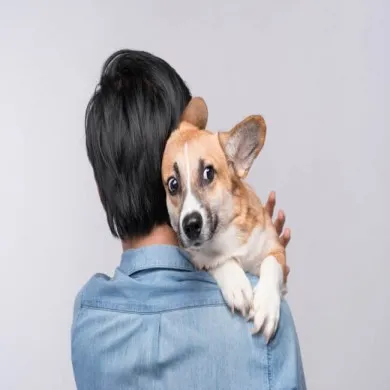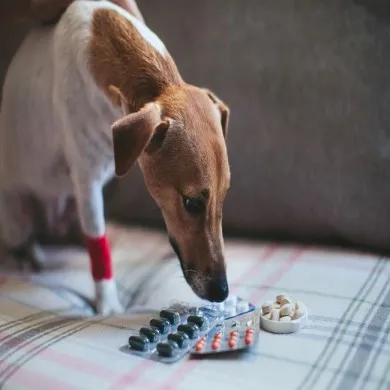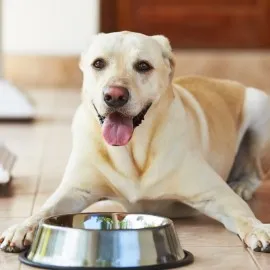It's a sad fact that dogs suffer from anxiety just like we do from time to time. When all you want is the best for your little pal, it can be distressing to know they're suffering. And the worst thing is, dogs can't communicate as we can. While we'd all love to be able to talk to our dogs, and some of us probably do anyway, it's a pretty one-way conversation. Dogs can have trouble expressing their troubles. Sometimes, it can be difficult to recognise their actions and act accordingly. If you're worried about your furry friend's mental health, here's everything you need to know about panic attacks in dogs. We'll tell you how to recognise the symptoms, what's causing them, and how to help them.
What are panic attacks?
A panic attack occurs when the body's reaction to fear triggers a severe response. They often occur when the fear is misplaced, or exaggerated by the brain. It's the same for dogs too.
What causes panic attacks in dogs?
There are many reasons dogs can have panic attacks. A noise, like fireworks or thunder, can put a dog on edge, leading them to feel anxious and cause a panic attack. Travelling can also bring them anxiety. This could be on a plane, a train, or even in your car. Also, if they suffer trauma, or are left alone from their playmate or owners, they can have a panic attack. Or, it could be something as simple as their environment. If they're locked in a room or small space, kept in a kennel, they can start to feel the anxiety that then results in a panic attack.
What are the symptoms?
While there are many causes of a panic attack in dogs, there are also many symptoms you need to look out for. Like people, a raised heart rate or breathing rapidly is one way to recognise it. They could drool more than usual, hide behind furniture, or howl excessively. Others include:
- If your dog is shaking or trembling
- If they refuse to eat
- If they're biting, barking, or acting uncharacteristically aggressive
- Vying for your attention more than usual
- If they're chewing on themselves
- If they urinate or defecate inside when they're already trained to go outside
Diagnosing a panic attack in Dogs
Unfortunately, this is something you can't do yourself. If your dog is exhibiting symptoms of a panic attack, you need to take them to the vet as soon as possible. If you can, bring as much evidence of the episode as possible. A video of your dog's panic attack, or detailed information around its circumstances could help a professional work out what caused it, whether it's one or more possible triggers.
Your vet may also give your little buddy an exam or run some tests. With any luck, you'll leave knowing exactly what caused the panic attack and how to avoid it in the future, if possible.
What you can do to help
While this can vary wildly depending on the likely causes of your dog's panic attacks, there are a few general ways you can help calm them and potentially stop them from occurring in the future.
Firstly, try getting them more exercise day-to-day. Exercise causes the brain to release serotonin, which can help calm anxiety. Or, you could try calming supplements. Animigo's Caninexiety is a specially designed supplement full of vitamins and minerals that are known to calm feelings of anxiety. It can benefit dogs of all shapes and sizes too. Alternatively, your vet may prescribe some anti-anxiety medications to help them feel at ease. Finally, giving your dog a safe space to go to when they feel anxious could make a massive difference.
Helping your dog recover
Once you know what is triggering your dog's panic attacks, there may be behavioural or routine changes you can easily make to put them on the road to recovery. Take it easy, take it slow, and give your dog extra special love and attention while you make changes. If, however, their road to recovery isn't as smooth as you'd like, dog therapy is an option. Yes, just like with people, dogs can get therapy too. Maybe have a look online for dog therapists around your area? With any luck, they'll do a free consultation, allowing you to talk through the situation. Then, if you're happy, take your dog in and provide them with the care they need.
That's everything you need to know about panic attacks in dogs. We wish you and your pup a speedy recovery!









